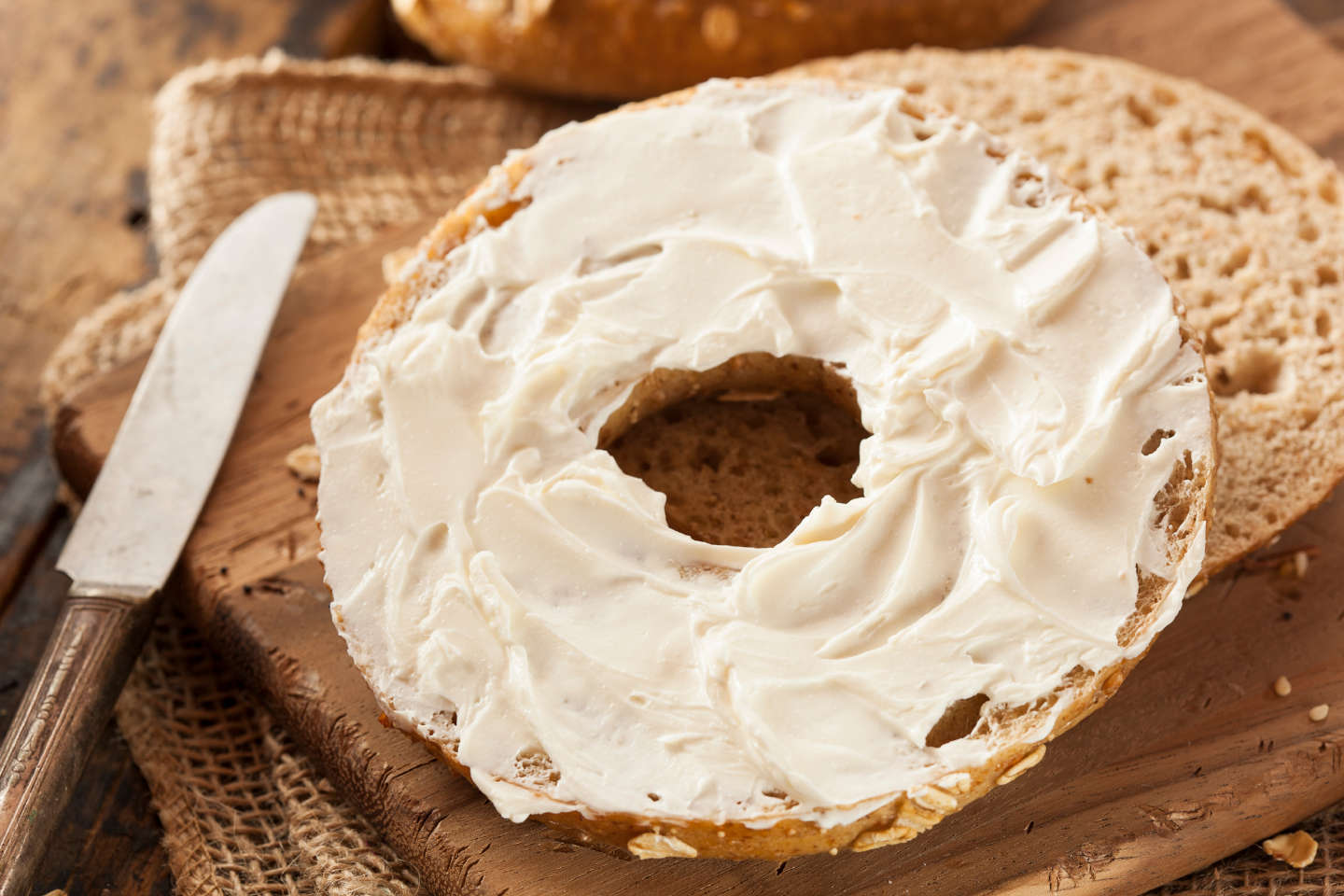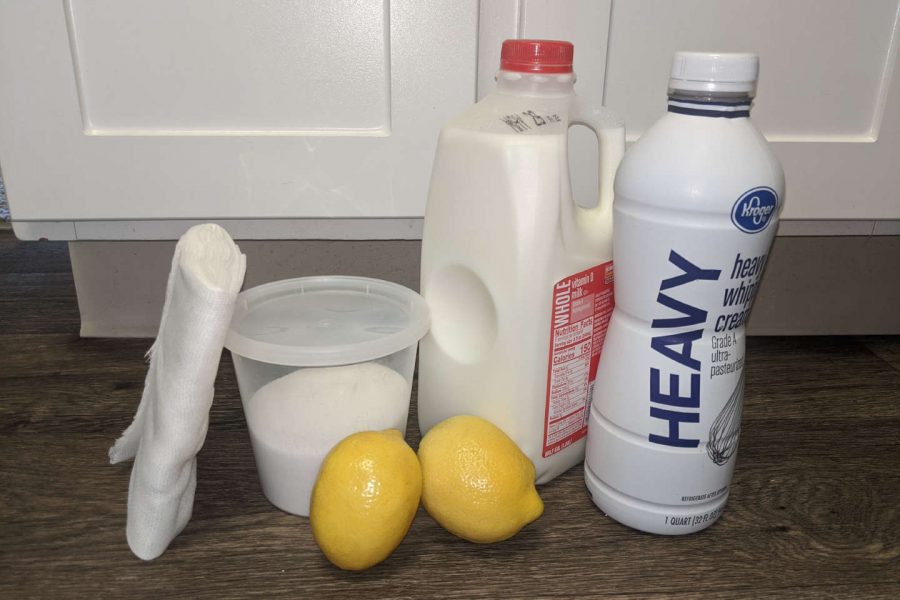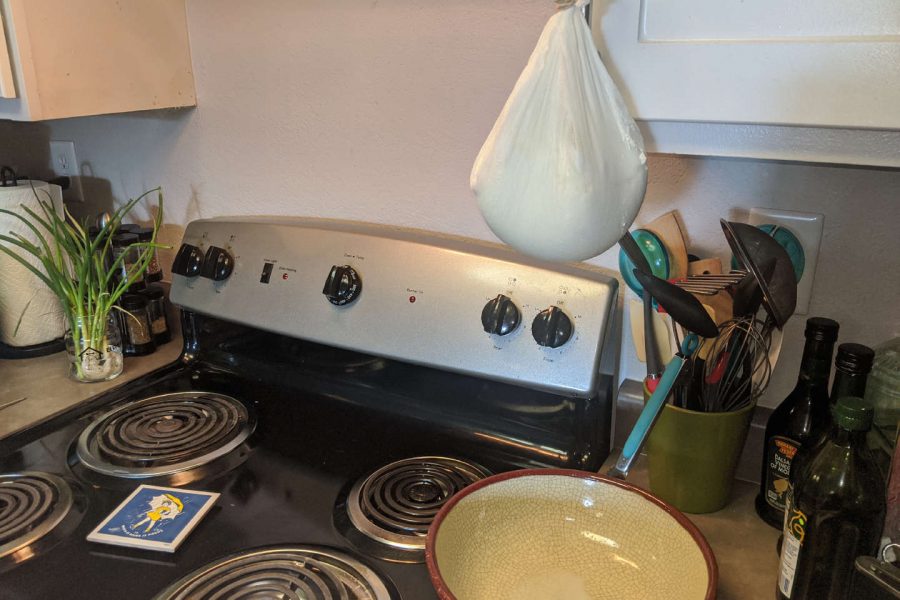
By Megan Wabst
Cream cheese is like a thicker, creamier cousin of ricotta cheese (How to Make Riccotta Cheese at Home). Like most cheese, it is milk that separates into solid curd and liquid whey forms. Curds are the solids that cheesemakers press, inoculate with cultures, and form into different types of cheese. Whey is the liquid left over once the curds have separated.
Key Components of Cream Cheese
Cream cheese needs a thicker dairy base than standard cheesemaking to become the lovely substance we smear on things.
Heavy Whipping Cream
Heavy cream is what gives cream cheese the thick consistency and flavor that lead to the perfect bagel topper.
Whole Milk
Whole milk thins the heavy cream and makes for a lighter finished product. Most commercial cream cheese is made from a blend of milk and cream, but feel free to play with the ratio to adjust to your personal preference.
Acidity
Lemon juice and distilled white vinegar are both readily available at home and work to create delicious versions of homemade cream cheese. Lemon juice will provide citrusy sweetness. Vinegar creates a more savory cream cheese and is sometimes said to work better than lemon juice because its consistent acidity more predictably creates curds (the pH of lemons can vary).
Optional: Cream Cheese Starter Packets or Cultures
If you want to go the route of purchasing a starter culture, you’ll be able to make cream cheese out of heavy cream alone. Packets usually contain strong cream cheese starter bacteria as well as a coagulating enzyme such as rennet. These packets can be hard to find, so this recipe is based on easily found home ingredients.

Gearing Up to Make Cream Cheese
Making cream cheese requires a few common kitchen gadgets:
- Clean pot (ensure this is a non-reactive metal such as stainless steel)
- Thermometer
- Measuring spoons
- Cheese cloth (2-3 yards, folded over to completely overhang colander on all sides)
- Large bowl
- Strainer/colander
- Clean, airtight storage container
Cream Cheese Recipe
Yields about 3 cups
Ingredients
- 2 ½ cups heavy whipping cream
- ¼ cup whole milk
- ¼ cup white distilled vinegar or ¼ cup lemon juice
- 1 tsp. salt (optional)
Preparation
Ensure pot, thermometer, measuring spoons, bowl, strainer, and storage container are clean. Moisten cheesecloth lightly and drape over the strainer/colander, then place in the large bowl or in the sink if you are discarding the whey. The thick curds will be weighty, so be sure the you have enough cheesecloth to reach the bottom of the strainer/colander while still reaching over the sides.
Execution
- Over medium-high heat, bring the milk and heavy cream to a gentle simmer (185-195°F).
- Once the mixture looks like it is about to boil, turn off the heat and add vinegar (or lemon juice) and stir gently.
- Allow the mixture to separate for 10-15 minutes at room temperature, then spoon mixture into the waiting cheesecloth and bowl/strainer. Once you have removed a few spoonfuls, slowly pour the remain mixture into the cheesecloth.
- Let the mixture rest in the cheesecloth for 30-45 minutes to remove some of the heavier whey, then gather the ends of the cheesecloth together. Tie the bundle securely and suspend the bundle over a bowl by 1-2 inches using a cabinet handle, faucet or anything sturdy (see image).
- Allow the bundle to drain the remaining whey for 12-24 hours at room temperature or cooler.
- Squeeze the bundle gently to remove any remaining liquid, then carefully transfer the cheese into your clean, airtight container.
- Add salt or spices as you see fit. You just made cream cheese! (We chose 1 tsp. of salt and 3 Tbsp. of chopped scallions to make some onion cream cheese!)

Storage
Store the cream cheese in a clean, airtight container in the refrigerator for 1-2 weeks. It can be frozen, but the texture will become less spreadable and fluffy—only ideal for baking or cooked dishes.
About Whey
Whey is the liquid left over from the training process. It is going to be a bit acidic but can still be used for a plethora of applications. Since cream cheese creates thicker, smaller curds, there is not a lot of whey produced. What’s left can be stored in the refrigerator or freezer for up to 6 months. Always consider the sweet-to-salty ratio of your whey before deciding how to use it.
Salty whey works well in things like soup stock and pizza dough. It can also act as a thickener for things like gravy, or as the soak for grain, nuts, and beans.
Sweeter and/or unsalted whey, on the other hand, is great for things like lacto fermentation, dog treats, and as an added protein boost to smoothies.



Share Post